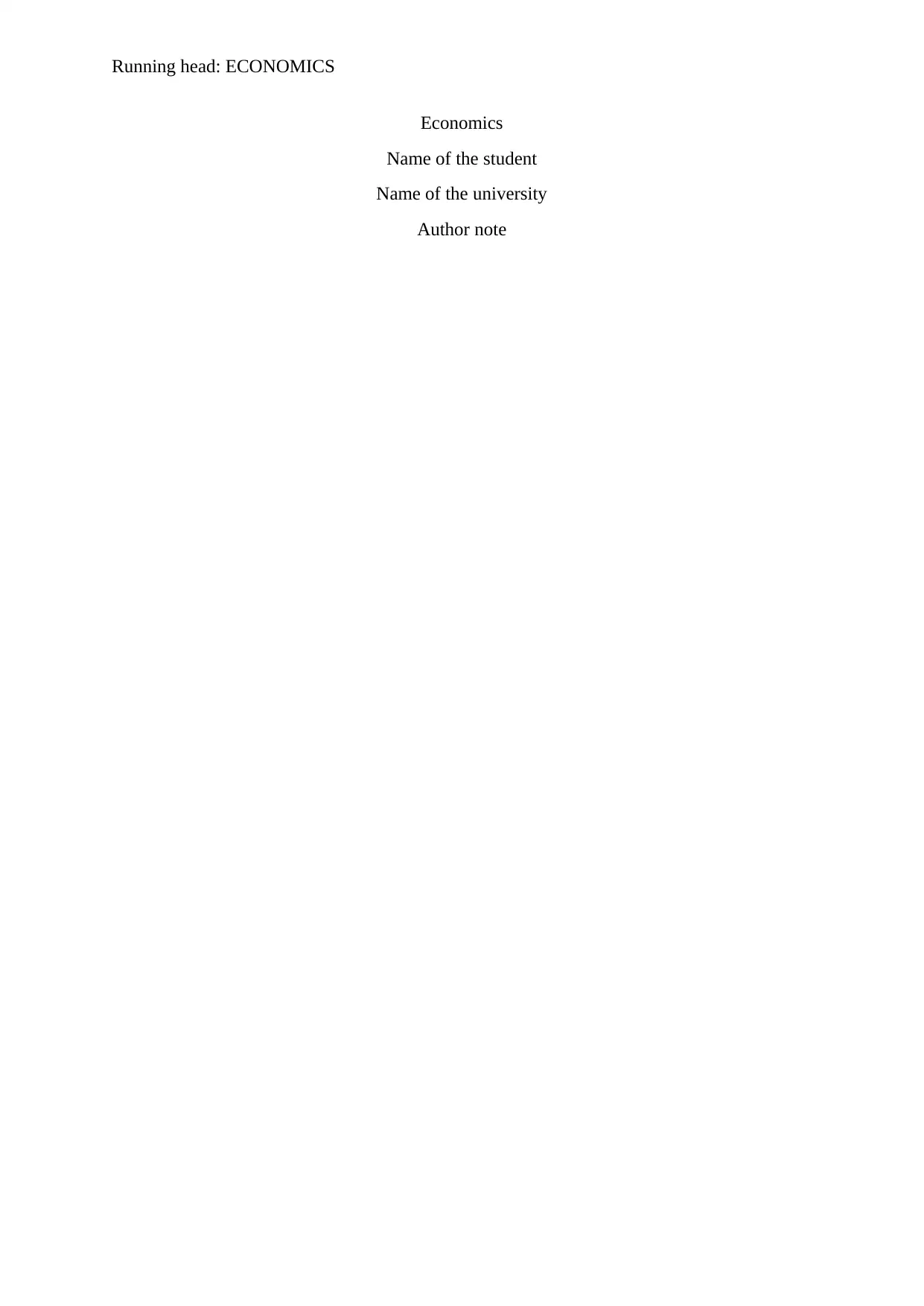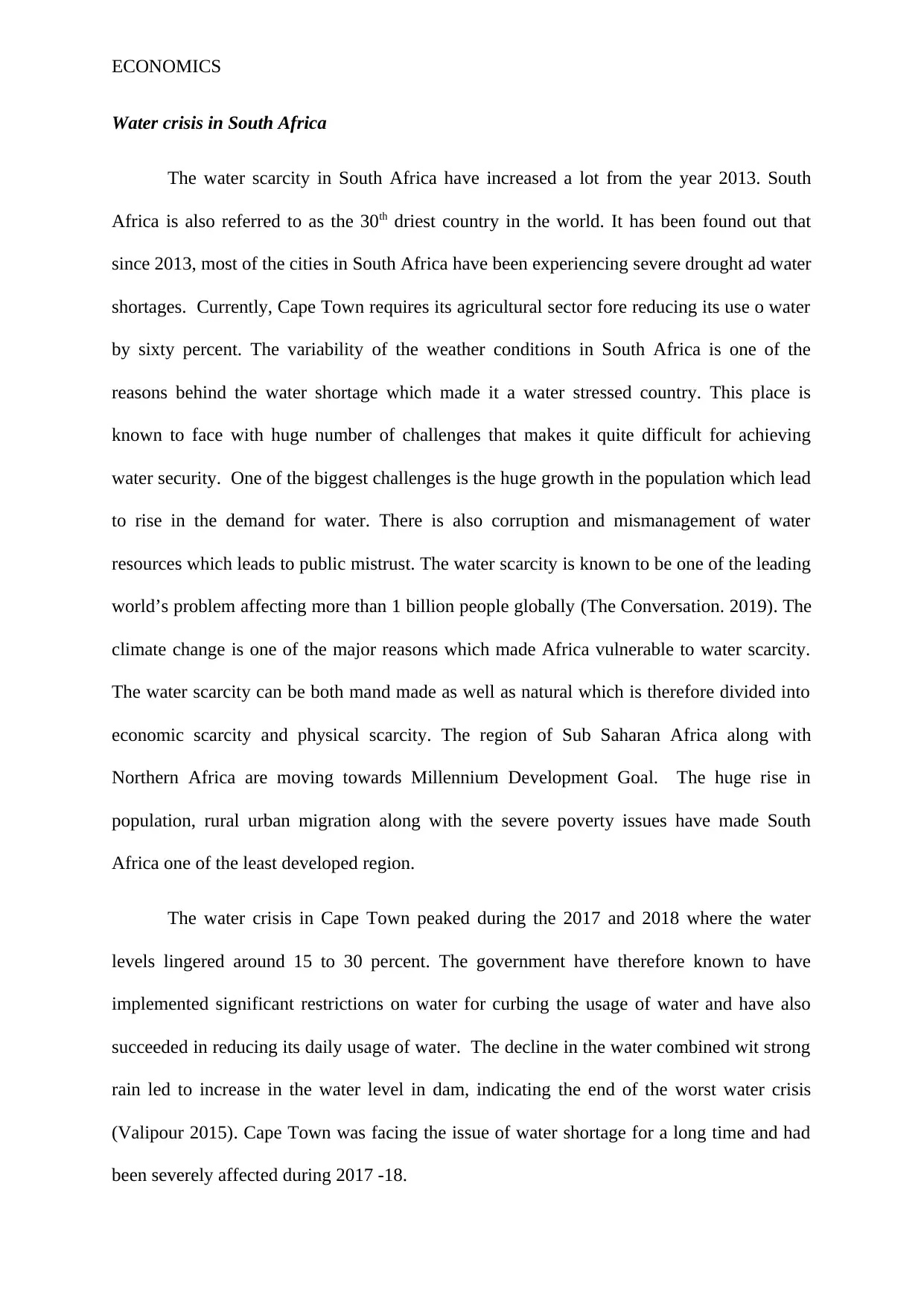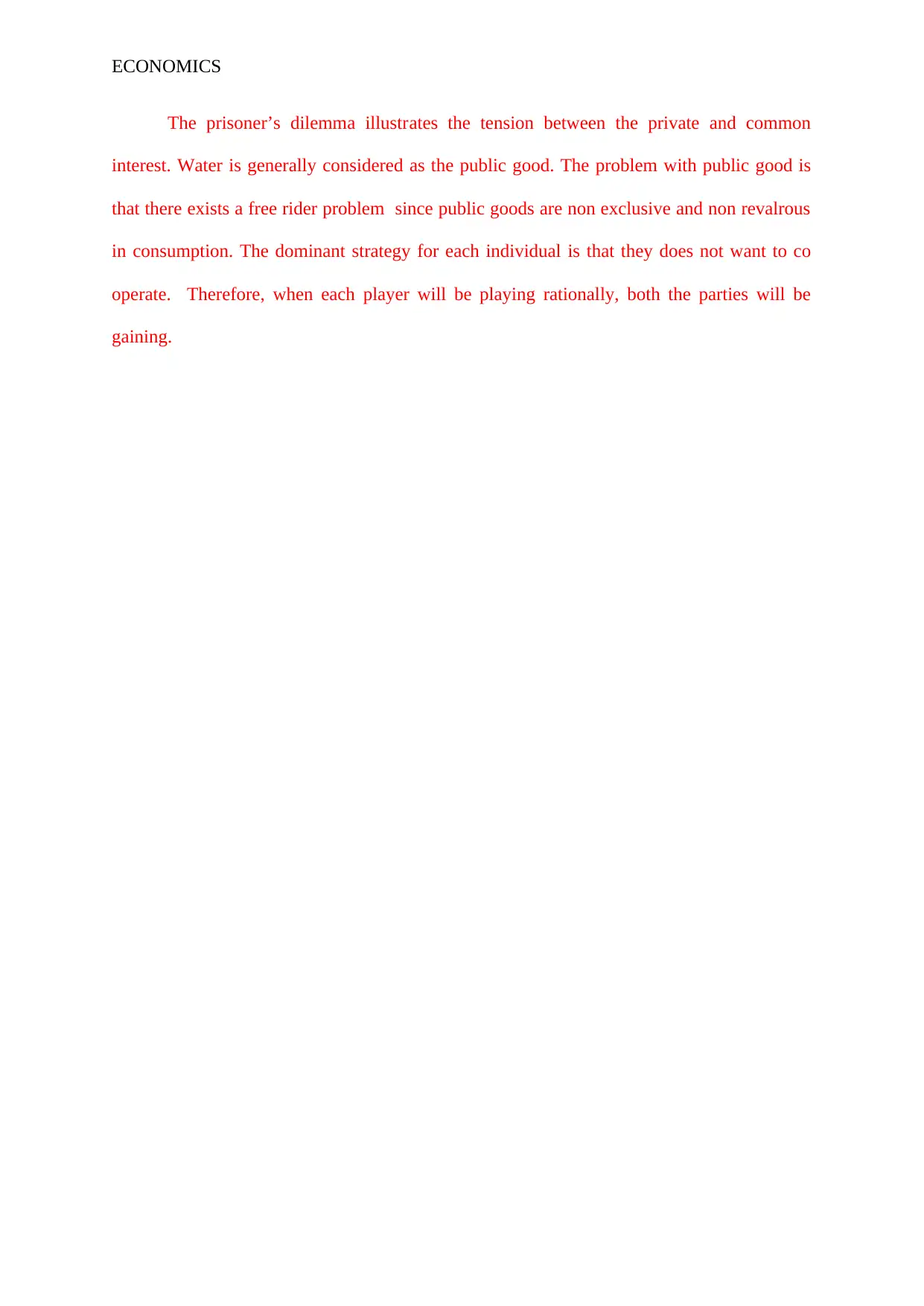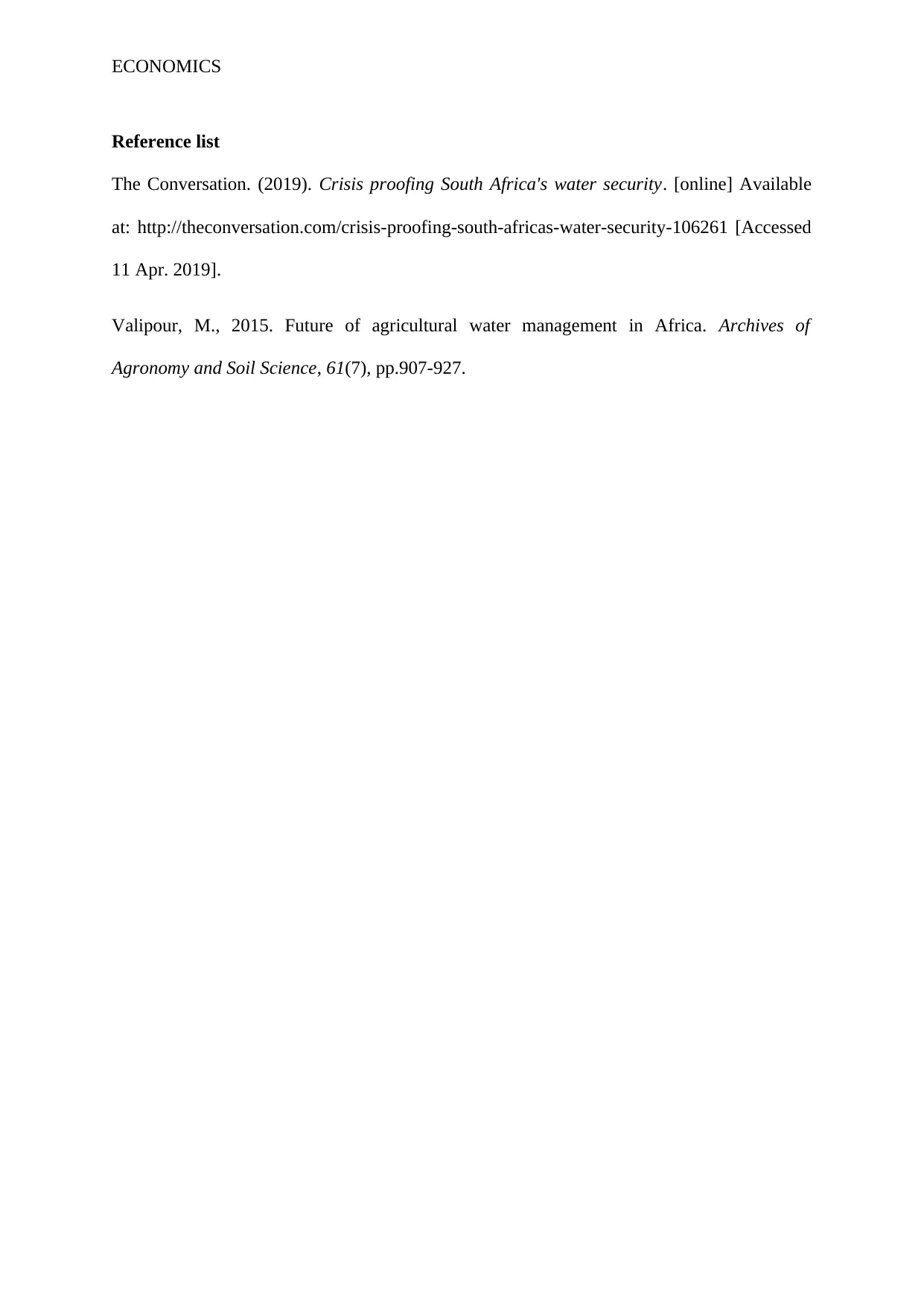Economics Report: The Water Crisis and Scarcity in South Africa
VerifiedAdded on 2023/01/18
|4
|543
|43
Report
AI Summary
This economics report provides an overview of the water crisis in South Africa, highlighting the country's severe water scarcity and its impact on various cities, particularly Cape Town. The report discusses the causes of the crisis, including climate variability, population growth, and mismanagement of water resources. It examines the economic aspects, such as the concept of public goods and the prisoner's dilemma, and analyzes the government's efforts to manage the crisis through restrictions and conservation measures. The report also touches upon the role of climate change and the challenges faced by South Africa in achieving water security, referencing the peak of the crisis during 2017-2018. The report provides a concise overview of the water crisis in South Africa and its economic dimensions.
1 out of 4











![[object Object]](/_next/static/media/star-bottom.7253800d.svg)